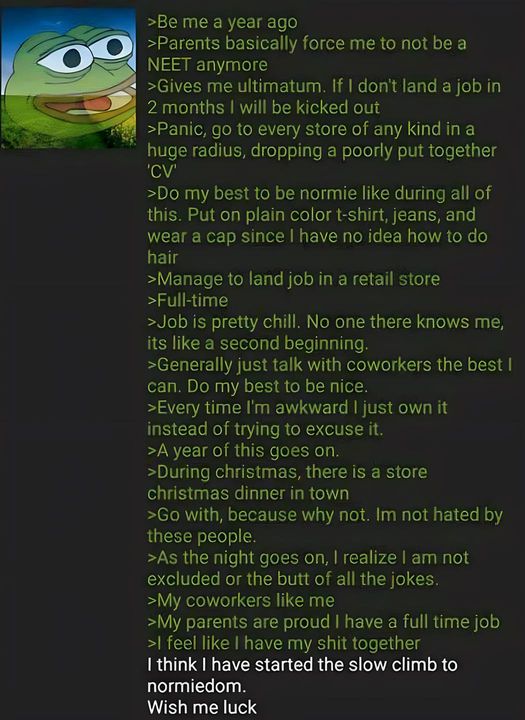this post was submitted on 11 Jul 2024
757 points (98.6% liked)
Greentext
4444 readers
1047 users here now
This is a place to share greentexts and witness the confounding life of Anon. If you're new to the Greentext community, think of it as a sort of zoo with Anon as the main attraction.
Be warned:
- Anon is often crazy.
- Anon is often depressed.
- Anon frequently shares thoughts that are immature, offensive, or incomprehensible.
If you find yourself getting angry (or god forbid, agreeing) with something Anon has said, you might be doing it wrong.
founded 1 year ago
MODERATORS
you are viewing a single comment's thread
view the rest of the comments
view the rest of the comments

Given the turnover rate, its not just anyone. The miserable nature of the work and the awful pay tends to make these jobs difficult to fill.
Subsistence farming hasn't been the primary means of employment in the US in over a century.
The inflation adjusted minimum wage of 1950 was $2 more than it is today. By the 1970s, the min wage was an inflation-adjusted $12.60. And that was with housing at less than a quarter of the going inflation-adjusted rate and utilities practically being free. Americans saw an explosion in quality of life between the 1940s and 1980s, peaking in the 90s at the dawn of the information age.
My home town of Houston is in its second city-wide blackout in barely more than a month. If our grid degrades any further, or a big enough storm tears up enough excess infrastructure, we could conceivably be back to wood stoves and out-houses by the end of the year. And we're hardly alone. From Flint, Michigan to Miami, Florida, core components of municipal infrastructure are failing in large part thanks to over-investment in consumer facing sales and under-investment in public works.